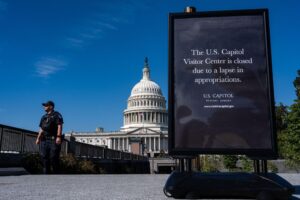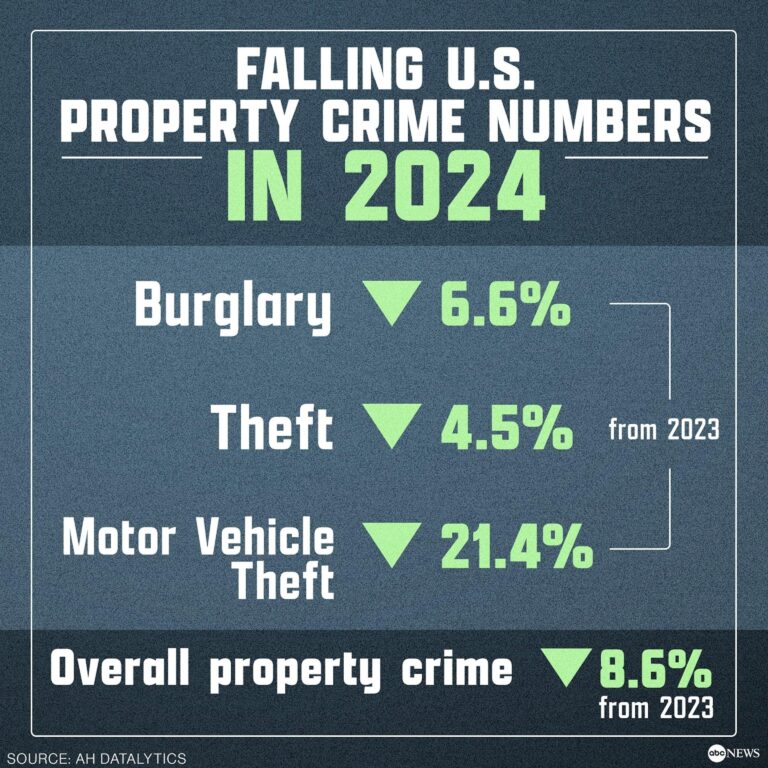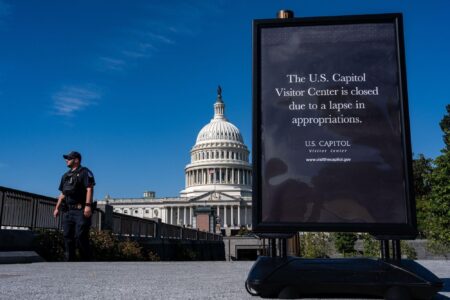Historic Decline in U.S. Crime Rates in 2024: Insights from FBI Data
The Federal Bureau of Investigation’s recent report reveals a remarkable downturn in crime across the United States during the first half of 2024. This decline spans multiple crime categories, signaling a positive transformation in public safety compared to previous years. Analysts and community stakeholders are examining the underlying causes of this trend and its broader implications for law enforcement and societal well-being.
Key highlights from the FBI’s findings include:
- Violent crime: Experienced a 12% reduction, reaching the lowest levels seen in over 40 years.
- Property crime: Fell by 10%, with notable drops in incidents such as burglary and vehicle theft.
- Homicide rates: Continued a steady decline for the third year running, decreasing by nearly 8%.
| Crime Category | 2023 Rate (per 100,000) | 2024 Rate (per 100,000) | Percentage Change |
|---|---|---|---|
| Violent Crime | 398 | 350 | -12% |
| Property Crime | 2100 | 1890 | -10% |
| Homicide | 6.5 | 6.0 | -7.7% |
This encouraging data reflects the impact of evolving law enforcement tactics and community collaboration, suggesting a promising direction for public safety initiatives nationwide.
Primary Contributors to the Reduction of Violent and Property Crimes in Urban Areas
The downturn in crime rates across major metropolitan regions can be attributed to several intertwined factors. Community policing has become a cornerstone strategy, fostering stronger bonds between officers and residents, which enhances communication and trust. This relationship encourages more accurate crime reporting and proactive prevention efforts.
Technological advancements have also revolutionized crime-fighting capabilities. The deployment of AI-driven analytics and predictive policing tools enables law enforcement to anticipate and mitigate criminal activity more effectively. These innovations help allocate resources efficiently and identify emerging crime patterns before they escalate.
Economic improvements contribute significantly as well. With unemployment rates dropping to historic lows—currently at 3.5% as of mid-2024—more individuals have access to stable income and social support systems. Programs targeting youth education and engagement provide alternatives to criminal involvement, disrupting cycles of violence and poverty.
| Factor | Explanation | Effect on Crime |
|---|---|---|
| Community Policing | Building trust and cooperation between police and citizens | Enhanced crime deterrence and reporting |
| Technological Tools | Use of AI and data analytics for crime prediction | Proactive intervention and resource optimization |
| Economic Growth | Lower unemployment and expanded social services | Reduced incentives for criminal behavior |
| Youth Engagement | Educational and outreach programs for at-risk youth | Breaking the cycle of violence and crime |
The Influence of Modern Policing Techniques and Community Participation on Crime Reduction
In the past year, law enforcement agencies nationwide have embraced innovative, data-centric policing methods that emphasize real-time crime monitoring and rapid response. These approaches have led to more precise targeting of criminal activity and quicker intervention, contributing to the overall decline in offenses.
Simultaneously, community engagement programs have expanded, fostering collaboration between police and residents. Initiatives such as neighborhood watch groups, youth mentorship, and conflict mediation workshops have been instrumental in reducing tensions and preventing crimes before they occur. Key elements of these programs include:
- Frequent community forums facilitating dialogue between citizens and law enforcement
- Joint problem-solving efforts addressing specific neighborhood concerns
- School partnerships offering mentorship and resources to vulnerable youth
| Initiative | Results | Scope of Implementation |
|---|---|---|
| Predictive Policing Platforms | 20% decrease in burglary incidents | Urban centers across the country |
| Community Liaison Officers | 30% boost in public trust | Major metropolitan areas |
| Youth Mentorship Programs | 15% reduction in juvenile delinquency | Suburban and rural regions |
Strategic Policy Recommendations to Sustain and Enhance Crime Reduction Efforts
To preserve the downward trajectory in crime rates, it is essential for policymakers to continue investing in community-centered programs that nurture trust and cooperation between law enforcement and the public. Expanding social services focused on mental health, vocational training, and youth engagement addresses the root causes of criminal conduct, fostering long-term safety and rehabilitation.
Moreover, advancing the use of sophisticated data analytics in policing, coupled with greater transparency and accountability, will improve the justice system’s effectiveness. Legislative reforms aimed at fair sentencing and reducing repeat offenses are critical components of a comprehensive crime reduction strategy. The following table summarizes priority areas for federal and state action:
| Focus Area | Recommended Measures | Anticipated Benefits |
|---|---|---|
| Community Outreach | Broaden neighborhood engagement and support programs | Enhanced public confidence and cooperation |
| Social Support Services | Increase funding for mental health and employment initiatives | Mitigation of underlying crime drivers |
| Policing Innovations | Adopt advanced analytics and predictive tools | More accurate crime prevention and resource use |
| Judicial System Reform | Implement fair sentencing and rehabilitation programs | Lower rates of recidivism and improved justice outcomes |
Conclusion: A Promising Outlook for Crime Reduction in the United States
The FBI’s 2024 crime report highlights a significant and encouraging shift in the nation’s crime landscape, with substantial decreases in violent and property crimes. While the causes are complex and multifaceted, the integration of community-focused policing, technological advancements, and social support initiatives appear to be driving this positive change. As law enforcement agencies and policymakers continue to refine their strategies, these developments offer hope for sustained improvements in public safety and community well-being across the country.







